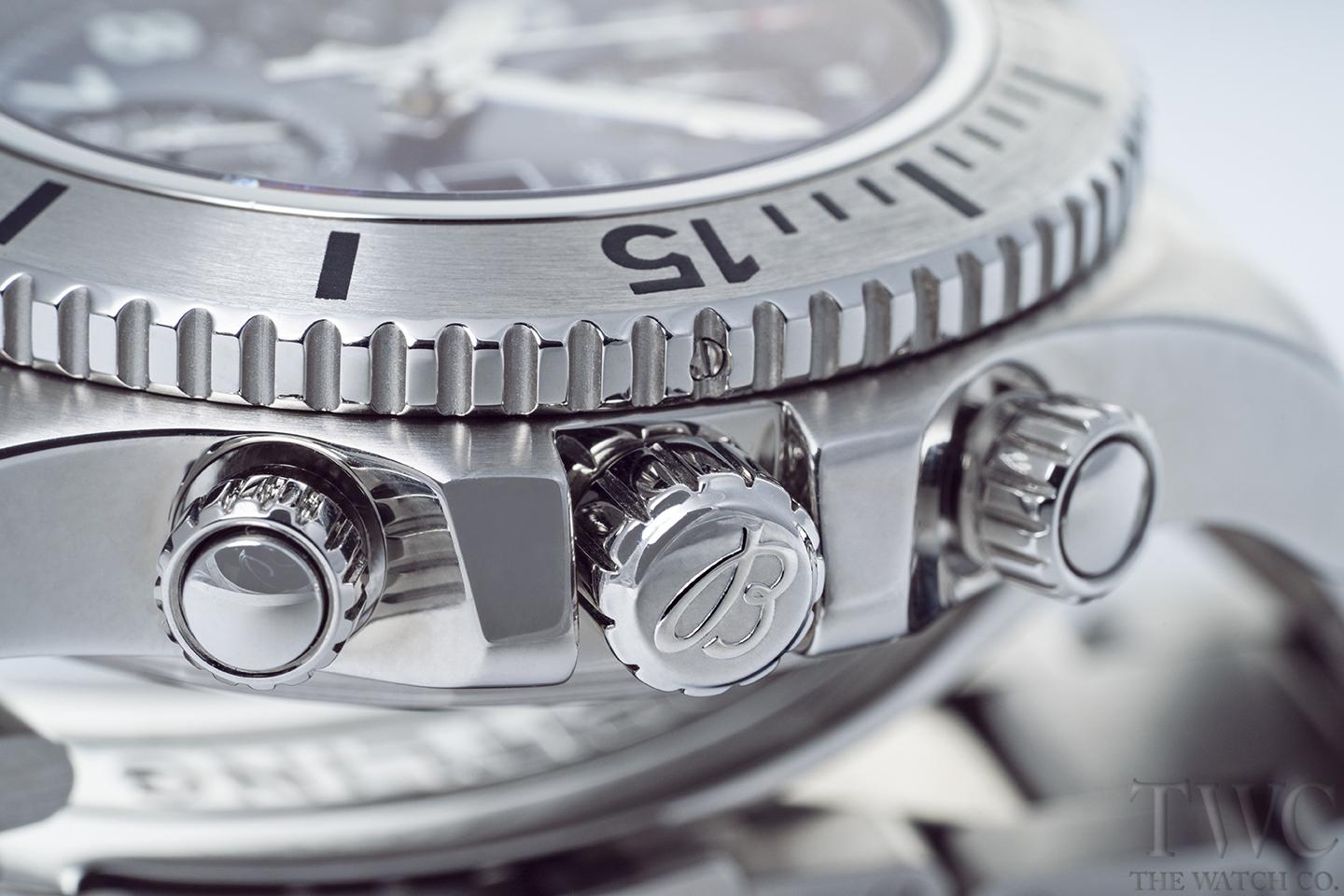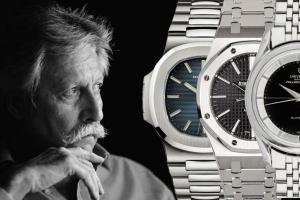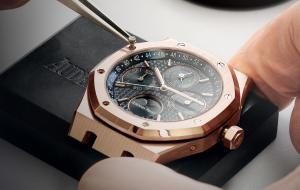Different Parts of a Watch: A Beginner’s Guide

Are you often confused about the different parts of a watch? For sure you know what’s a watch dial, but what is a bezel and which one is the crown?
Well, you are not alone. Most often, we all wear a timepiece without being bothered about knowing what the different parts of a watch are and what they actually do.
A simple watch can contain more than a hundred components, while the most complicated timepieces can have more than a thousand parts. Craftsmen design and assemble many different parts of a watch to create a masterpiece. These different and unique parts of the watch are what make the model exclusive.

But we won’t be talking about the more complicated components of a timepiece. This article is all about the basic parts of a watch and what they actually do. So that the next time you need to talk about your timepiece — to the retail guy or a repairman, for example, you would be able to communicate clearly and accurately.
Furthermore, having a better understanding of the parts of a watch can help you in choosing the right style, brand, and mechanism for your next watch. As you grow your own collection, it is better to familiarise yourself with the different terminology and functions of the different parts of a watch.
Here are the 12 basic and important parts of a watch that you should know about.
1. Watch Dial
The dial is the face of the watch that actually displays the time. If you have a digital watch, this shows you the numeric digital display, whether 12-hour or 24-hour time display. If you have an analogue watch, the face anatomy displays the hour markers — which can often be Arabic or Roman numerals, and hands — which traditionally consist of the hour, minute and second hands. Both of these parts of the watch dial will be discussed thoroughly later.
When it comes to the parts of a watch, the dial is the first thing that people notice. It is the most expressive part of the watch. And often, it comes in different colours, materials, textures and styles.
Among the most common styles of a watch dial that you’ll see include the enamel, guilloche, crosshair, skeleton and tapisserie. Below are basic explanations of these common styles of a watch dial and their examples.
Different Styles of Watch Dials
EnamelEnamelling is an old technique that started way back in the 13th Century BC. Enamel is a soft glass composed of soda, silica, and red lead which is then heated up to 1,200 degrees celsius to make it liquid and mix with the metal used on the watch dial. Craftsmen use different materials to play with colours. Different brands like Patek Philippe, Breguet, and Jaeger-LeCoultre are famous for their enamel watch dials.
Guilloche
This design refers to the wave-like pattern that is engraved on the dial. Some brands still hand-engrave their guilloche pattern, but, unfortunately, this art is becoming rare nowadays. Often, watch companies use a machine to engrave the watch dials.
CrosshairThe crosshair design refers to the thin, hair-like horizontal and vertical lines of the watch dial. It was one of the oldest and most popular designs used typically on dress watches. You can often see this style on Omega watches, particularly the Omega DeVille and the Omega Seamaster.
TapisserieMuch like a guilloche, but the tapisserie pattern is composed of tiny squares on the watch dial surface. The Audemars Piguet Royal Oak is perhaps the most famous watch with the tapisserie dial.
SkeletonA skeleton watch dial or ‘openwork’ dial allows for a closer view of the inner workings of a watch. It is one of the most highly-complex styles of the dial using special designs, materials and techniques to show off the intricate watch movement, mechanism and certain details and parts of a watch. Hublot and Maurice Lacroix have some of the most amazing skeleton watches.
2. Watch Bezel
The bezel refers to the ring surrounding the watch dial. It secures the watch crystal in place. But what is a crystal? We will talk about it in detail later.
Depending on the style and design of the watch, the bezel can be plain, decorative, and in case of a dive watch, functional. The bezel can either be fixed or rotatable for certain functions.
Below we talk about some of the most common functional types of the bezel.
Different Styles of Watch Dials
Tachymeter BezelA tachymeter scale is usually engraved on the bezel or around the outside of the dial. Often, it starts at the 7-second mark at 500 units, and it allows you to measure the speed based on the amount of time travelled at a fixed distance. A tachymeter bezel is fixed and used in conjunction with a chronograph. It is used to convert elapsed time in seconds to speed for events lasting up to 60 seconds.
Diving BezelA diving bezel, also called a count-up bezel, measures elapsed time. As the name suggests, it is commonly found on diving watches. It features a scale from zero to 60. To keep divers safe from accidentally rotating the bezel the other way, a count-up bezel is unidirectional. Most count-up bezels have to comply with ISO standards for dive watches, including the use of a unidirectional bezel, featuring a 60-minute scale.
To use the count-up bezel, start by rotating the bezel so the zero marker aligns with the minute hand. As the minute hand advances, you can read the elapsed time.
Countdown BezelA countdown bezel features a graduated 60-minute scale that “counts down” from 60 to zero. This is often used to measure the time remaining in an event, such as a race. It is also used on pilot or military watches to count down the time remaining during military strikes, for example.
Unlike bezels of dive watches, countdown bezels are usually bidirectional. To use a countdown bezel, rotate the bezel to make sure the time remaining (until the start of the event, for example) aligns with the minute hand. The countdown is complete once the minute hand reaches zero.
Dual Time or GMT Bezel
A GMT or dual time bezel is used to read the time in multiple time zones. The bezel features a 24-hour scale and zero marker, usually in the shape of a triangle. A GMT watch often comes with a fourth, 24-hour or GMT hand.
To use a GMT bezel, you should know how many hours ahead or behind the second time zone (the place you want to know the time of) is from your local time. Now, rotate the bezel until the desired number of hours ahead/behind is aligned with the 12-o’clock position. The time on the bezel that the GMT hand is pointing to is the time of the second time zone.
3. Case
One of the most important parts of a watch is the case, which refers to the housing of the watch. Materials can either be plastic, ceramic or metal. In luxury watches, you’ll often find stainless steel, gold, silver or platinum casing.
The case is the important structure that holds the inner parts of a watch. Depending on the style of the watch, the case comes in different finishes such as matte, polished or smooth, among others.
4. Crystal

Much like a window of a house, the crystal — the clear covering of the watch dial — allows people to see its interior clearly while at the same time protecting it.
Depending on the watch, the crystal can either be plastic, glass or sapphire. Watches nowadays use sapphire crystal because it is more durable and scratch-resistant.
5. Crown

The watch crown is the tiny knob you see on the side of your watch. It has several functions, including winding your mechanical (manually-wound) watch or stopping the watch in cases of battery-powered watches to save power.
You can also use the crown to set or change the time and set the date and day in your watch. For water-resistant watches, the watch crown is often screw-down into the case. In some cases, like the Cartier watches with its cabochon blue spinel, the crown features precious stones for added luxury.
6. Hands
[caption id="attachment_6791" align="alignnone" width="1024"] Photo from Amazon
Photo from Amazon
Among the easiest parts of a watch to recognise, the hands are the thin sticks on the watch dial that point to the hour markers to tell the time. The hands usually consist of the hours, minutes and seconds hands. The hour hand is often shorter than the minute hand, and the seconds hand is the thinnest.
Depending on the brand, the hands can have different designs. The most common designs include the snowflake hands (Tudor Pelagos), Mercedes hands (Rolex Submariner), and arrow hands (Omega Seamaster).
Some complicated watches like chronographs and GMT often have additional hands or fourth hands.
7. Hour Markers
The hour markers are the actual labels or indexes on the dial, usually actual numbers 1 to 12 or 12 indexes, to indicate the time. The most common are Arabic and Roman numerals.
Different Types of Hour Markers
Arabic NumeralsThe Arabic numbers — 1, 2, 3 up to 12 — appear in watches in different forms. Depending on the watch style, Arabic numerals often appear from 1 to 12, representing each hour. Other watch designs use Arabic numerals at the 3, 6, 9, and 12 o’clock positions. Others only use a single 12-o’clock Arabic numeral marker. In very rare cases, like the Franck Muller Crazy Hours, the Arabic numerals appear jumbled.
Roman Numerals
The Roman numeral markers — I, II, III up to XII — use a combination of letters from the Latin alphabet. Although this style of writing numbers is no longer common, many watchmakers still use Roman numerals in their hour markers. Like Arabic numerals, Roman numerals can be displayed in different ways. Some use Roman numerals from 1 to 12, others only appear in certain positions. Cartier is famous for using Roman numeral hour markers.
Diamond MarkersOften seen in ladies’ watches, diamond markers take the place of numbers or indexes to mark the hours. They also play a big part in making the watch more aesthetically appealing and luxurious.
Other StylesDifferent brands often have their own signature hour markers, including arrow markers, baton indexes (IWC Aquatimer), dagger indexes (Glashutte Original), and round indexes (Omega Seamaster), among others.
8. Lugs

The lugs or “horns” are the small metal attachment that links and secures the watch case to the straps or bracelet. The style of the lug depends on the strap, and it can be plain or decorative. It is also necessary for you to know how to measure the width of your watch’s lug for when you need to order a new strap.
The lug width is the space between the lugs. You will need a calliper to measure the width using millimetre, with the most common sizes ranging from 18mm up to 24mm.
9. Pushers

A pusher or a push-piece controls some functions and complications of the watch, such as to start and stop a chronograph. It can either be just one or two and often sits beside the watch crown. Together with the other parts of a watch, the pushers are used to set specific advanced functions of a watch. The design varies depending on the style of the watch.
10. Sub-Dial
Sub-dials are mini dials you’ll see on the watch dial. These sub-dials display several functions, including the seconds, chronograph, or calendars and moon phase complications. Depending on the required functions and style of the watch, the number of sub-dials varies in each watch. Some have one, two or three.
11. Bracelet/Strap
One of the most fun parts of a watch to play around with is the bracelet or strap. The strap secures the watch to your wrist. Leather made from calfskin, alligator or crocodile, as well as metals such as stainless steel, gold, or titanium, are among the most common materials for straps.
Other options include satin, nylon, and rubber for more sporty and water-proof watch styles. To give wearers more variations and preference in style, some watch brands allow their watches to have interchangeable straps and bracelets.
12. Watch Movement

A watch movement or the ‘calibre’ is the mechanism that powers the timepiece and makes it run. Basically, the movement is the engine of the watch. Often called the brain and the heart of a timepiece, the movement is one of the most important parts of a watch.
The three most common types of watch movements are quartz movement, mechanical movement (manual-winding) and automatic movement (self-winding watch).
- Quartz Movement: A quartz movement gets its power from a battery and provides a very accurate time. Besides changing the battery, a quartz movement requires very minimal upkeep. Watches with a quartz movement are also often less expensive than mechanical watches because they require less work and have the least watch components. A quartz battery sends an electrical current through a small quartz crystal. Once the crystal is electrified, it creates vibrations that allow the watch movement to fluctuate or oscillate, which in turn drives the motor and keeps the watch hands moving or ticking.
- Mechanical Movement: A mechanical movement can either be manual or automatic. Often, watch lovers prefer mechanical watches over quartz watches due to the high level of craftsmanship and quality involved. These watch movements consist of many different intricate components that watchmakers assemble to power the timepiece.
Other Types of Mechanical Movements
The manual movement is the oldest type of watch movement. It needs to be manually wound to power the spring in the timepiece. This spring stores energy and transfers it through a series of gears and springs, giving the energy to power the watch. The winding intervals of a manual movement depend on the capacity of the power reserve of the timepiece, which can vary from 24 hours to 8 days.
On the other hand, an automatic movement gets its power from the natural motion of the wearer’s wrist. Also called a self-winding watch, an automatic movement is less troublesome than a manual movement because the wearer doesn’t have to worry about winding your timepiece regularly to ensure uninterrupted function.
There you have it. We hope you learn a thing or two about the different parts of a watch. If you’re keen to learn more about the tachymeter and how to use it, check out our feature on tachymeter here.


